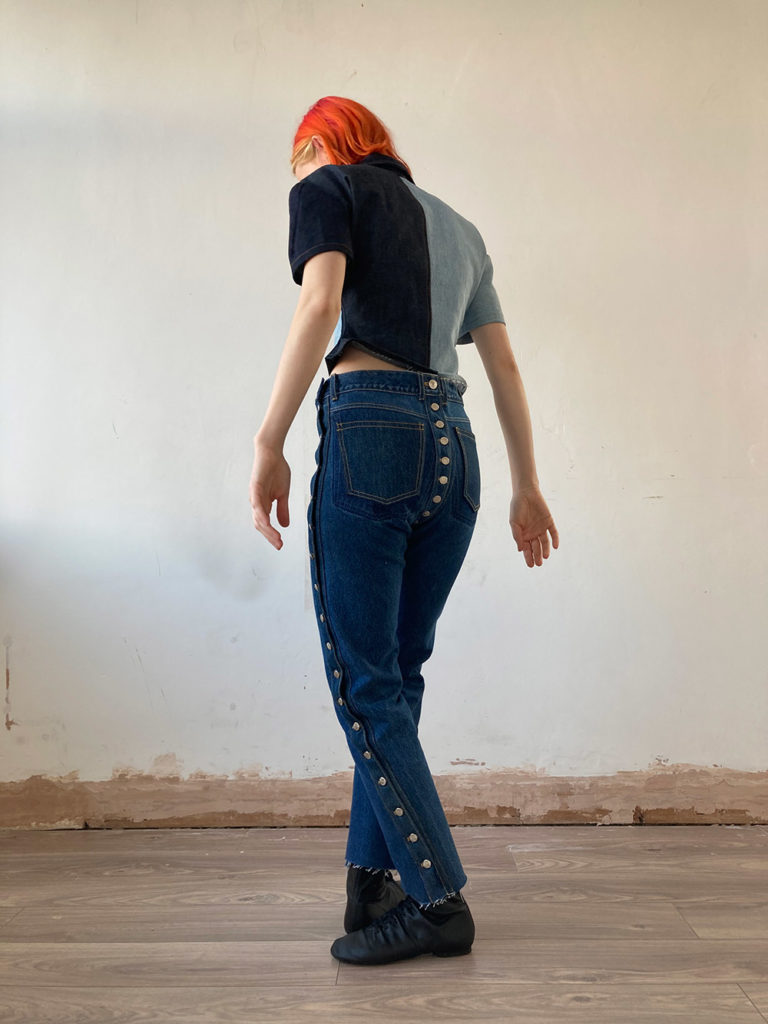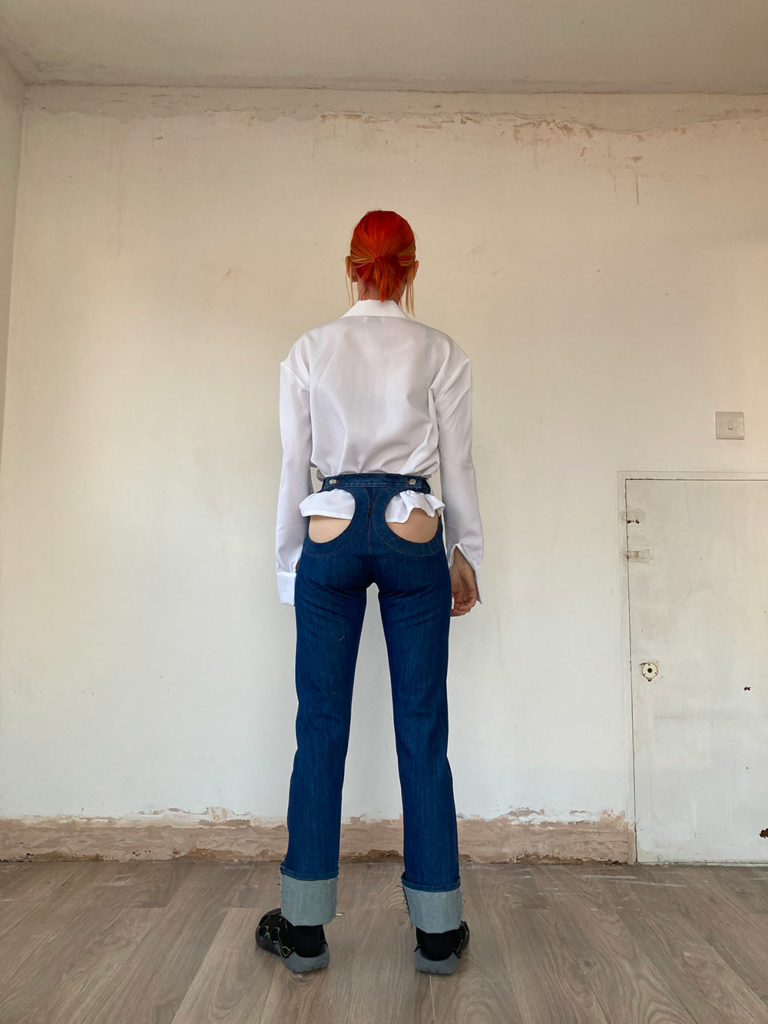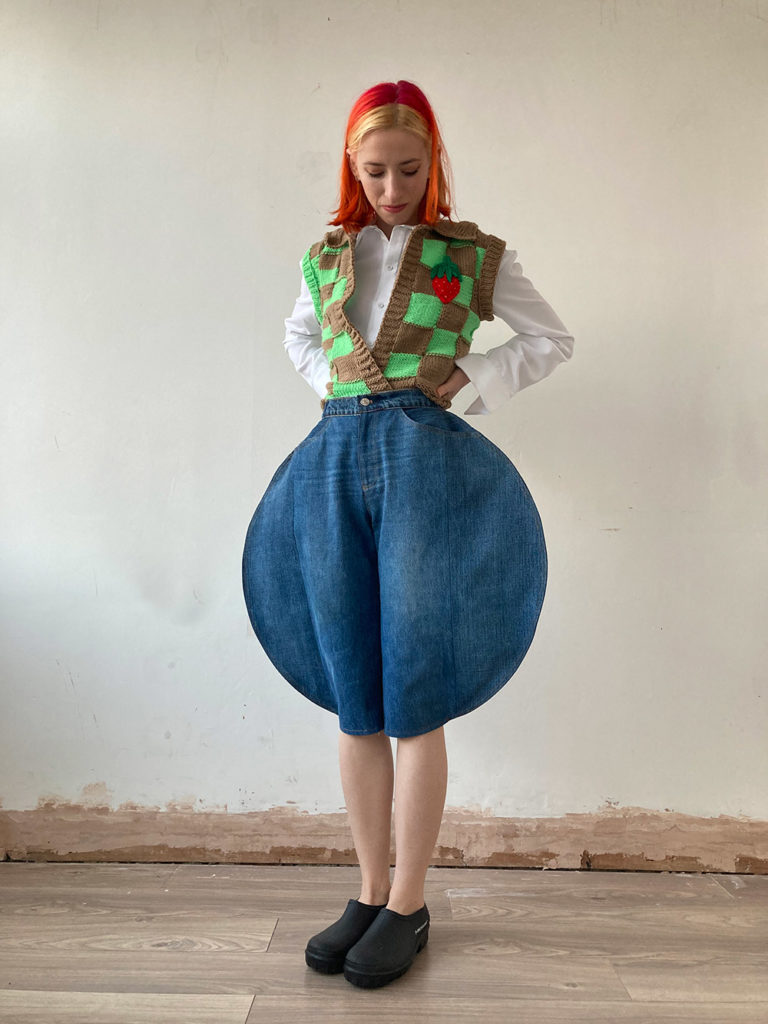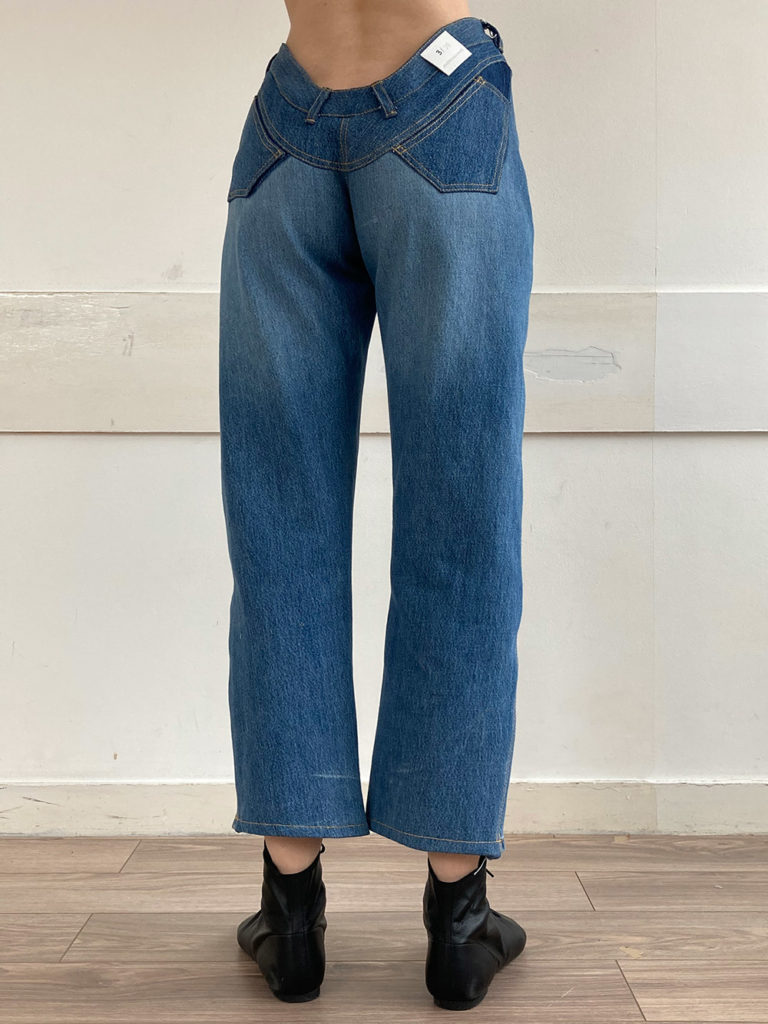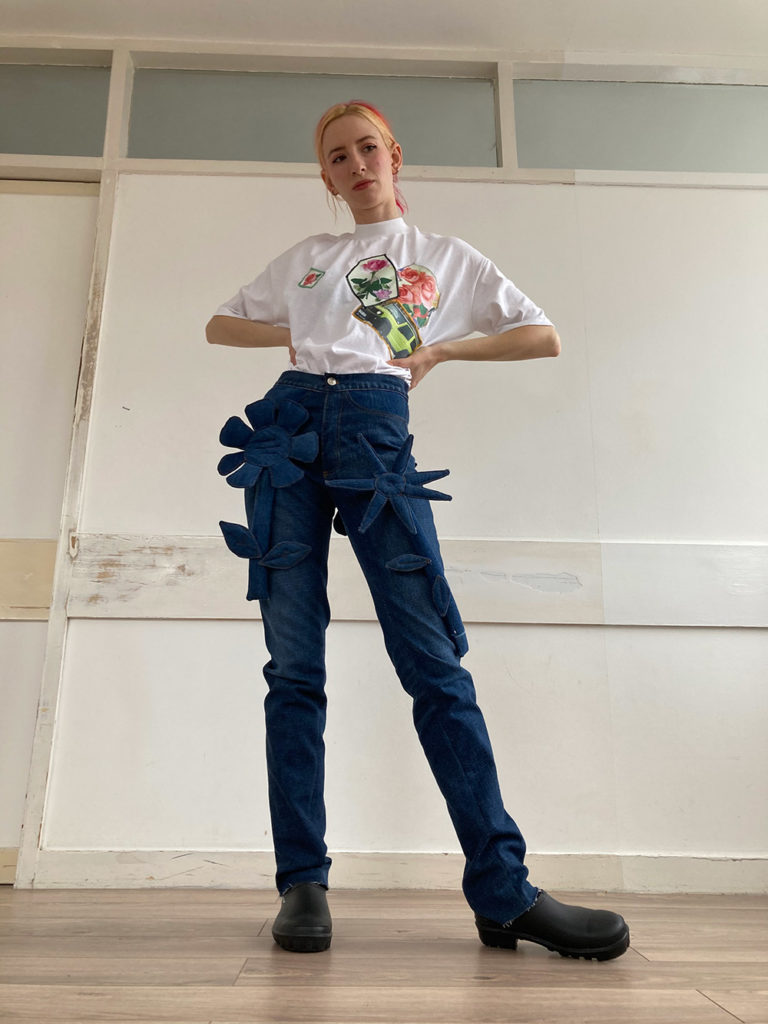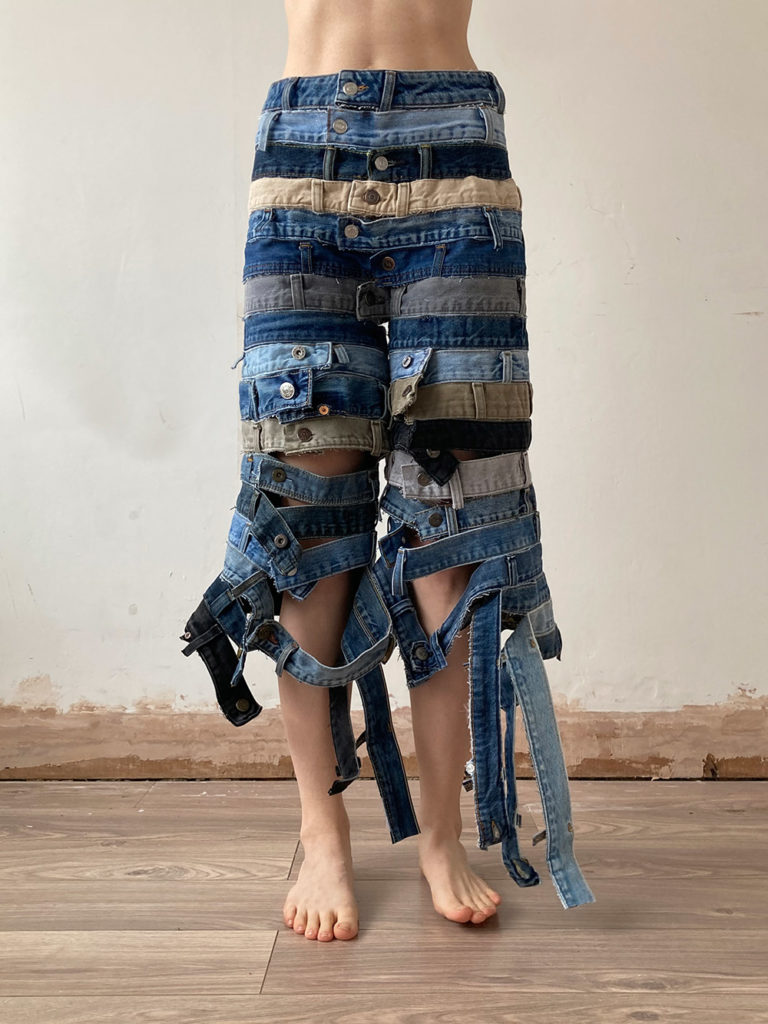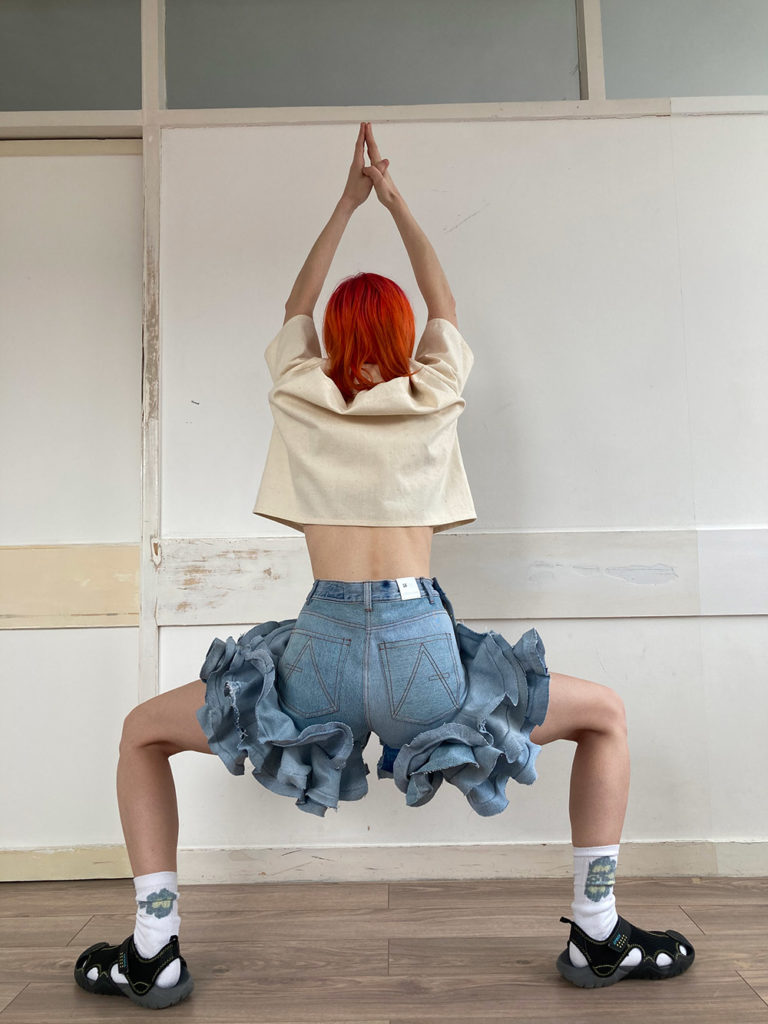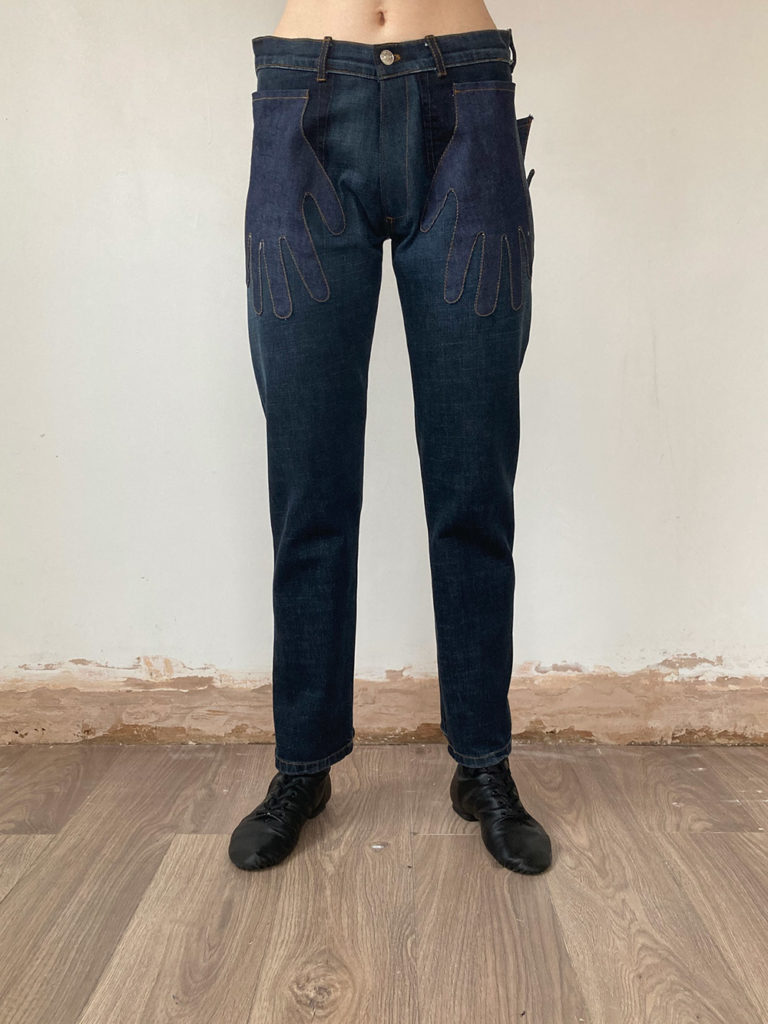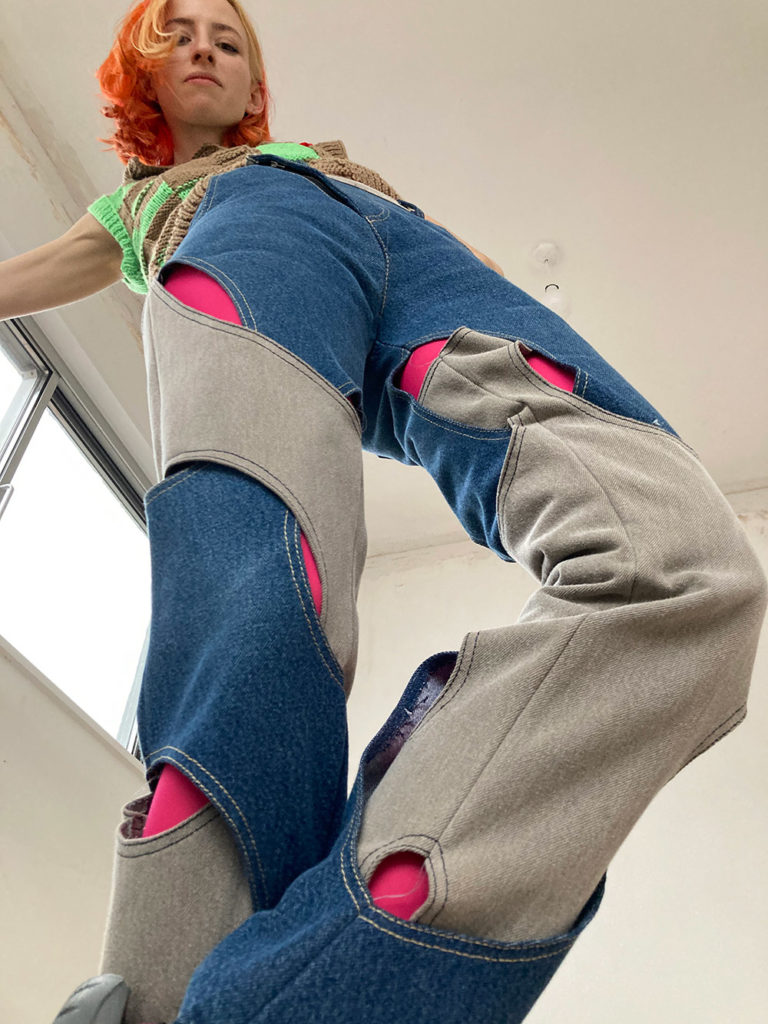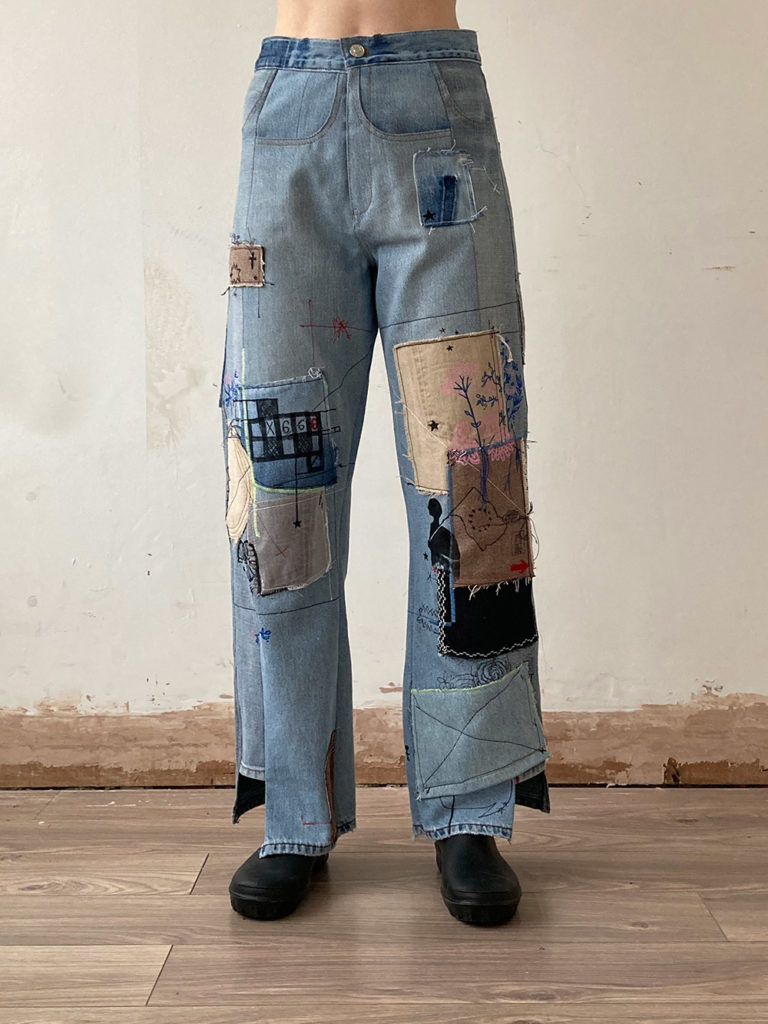Throughout the January lockdown in London, designer and Suzanne Rogers Fashion Institute fellow Alexandra Armata created 30 Jeans in 30 Days. The experiment came to life through 70 locally-sourced pairs of denim, which she then reconstructed into newer styles tinged with whimsical aesthetics. Armata explains that jeans can reincarnate, embodying the lifestyle of the new wearer while unintentionally celebrating the context of the original pair. This project redefines the considered value in denim and appreciates the garment beyond its intended lifespan. We spoke with Armata to get an inside look at her design process and the welcomed challenges she faced throughout a month of intensely focused creativity.
How did you source inspiration for 30 different pairs of jeans?
“The project was inspired by Martino Gamper’s 100 Chairs in 100 Days and the process of daily design without hesitation. In the description of his process, Gamper explains that the design of each chair started with a verb (for example, twisting, flipping, merging, scaling, etc) which would guide him toward potential design outcomes. Initially, my process was similar and I began each design by manipulating the traditional structure of denim by twisting, cutting, and merging the material. As the days went on, I thought of ways of combining the denim with inanimate objects or utilizing scraps leftover from previous pairs.”
Can you take us through what your design process looked like?
“Every day, I followed the same routine; I would wake up, spend about an hour settling on a design, draft the pattern, “strip down” a couple pairs of jeans, cut out the new pattern in the upcycled denim, and sew the new pair together. Since the experience of producing this project in isolation became quite monastic, it forced me to commit to the creative process. One limitation of the project was that the jeans needed to be upcycled and made within a day. This made me evaluate how much I could realistically accomplish in that timeframe, and therefore influenced the design. Because of this constraint, the design process was a lot simpler than what I am used to. Normally, I would agonize over the fit and details, but there wasn’t enough time, so I had to be decisive and accept when a pair didn’t come out as I imagined. I had a folder of research I accumulated during the course of my MA, so in combination with the project framework, my design process was as streamlined as possible.”
What was the biggest challenge you faced while creating this collection?
“The biggest challenge was stripping down the used jeans I collected. Ordinarily, you would have a piece of fabric to cut a pattern from, but with this process, I had to cut apart each pair of used jeans, adding an extra 1-4 hours of work. If I didn’t have a daily deadline, I wouldn’t mind. But with a project where every hour counts, in some cases, it became a huge challenge.”
Do you have a personal favourite pair from the 30? Which was the most fun to create?
“My favourite pair is 1/30, the Long Fly. It’s the first pair that I made and it’s still my favourite. It was a design idea that I had for a while and is a good balance of practicality with a slight deviation from the traditional structure of jeans. I also really like 28/30, because it was a design in which I had little hope, but the outcome surprised me the most. It’s also one of the only pairs that when worn inside out, could almost count as an entirely different pair of jeans. It was upcycled from scrap strips of denim in different washes and leftover pocket bags, and the result has a lot of detail and movement.”
View the gallery for ten of our favourite jeans. The full collection can be viewed here.

